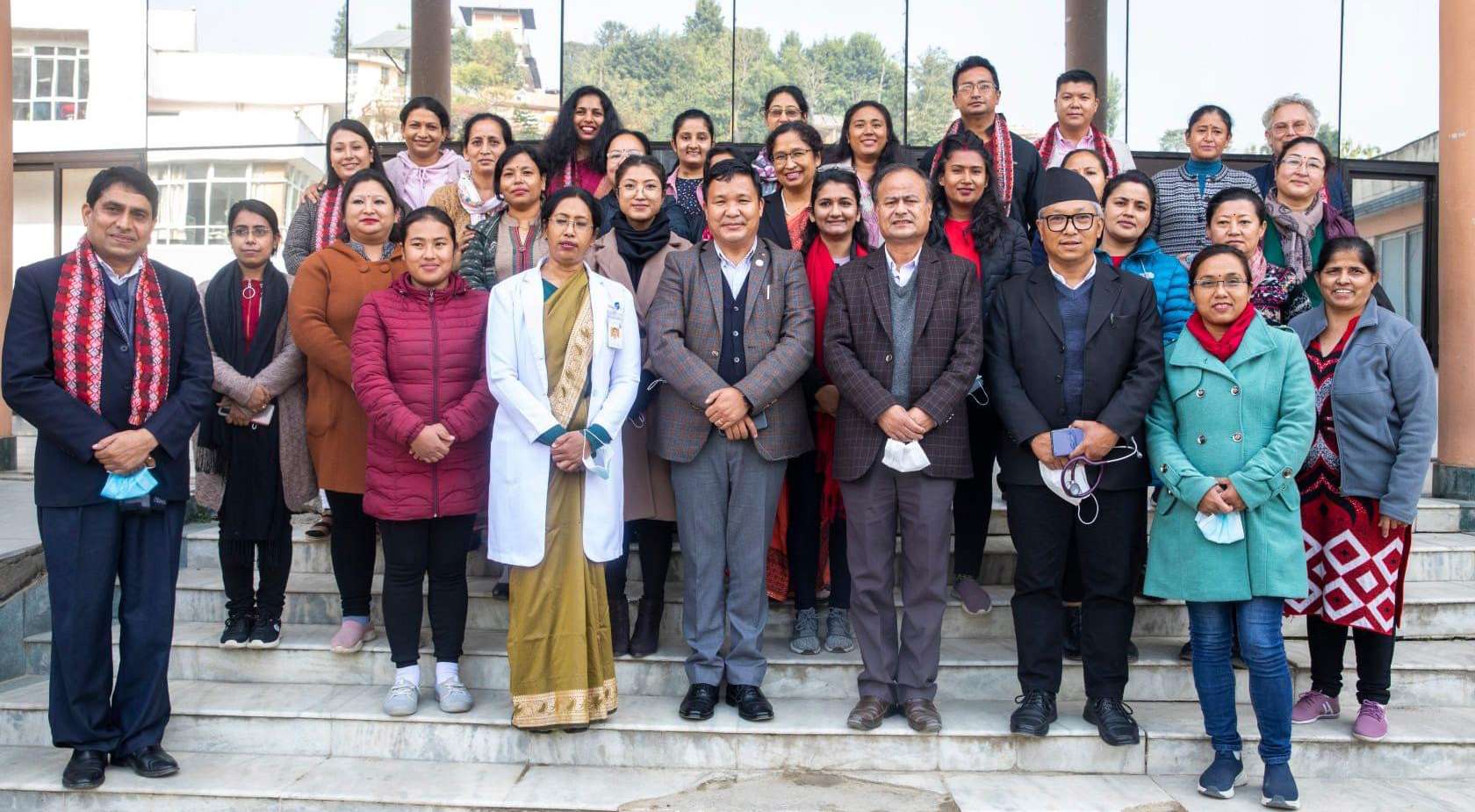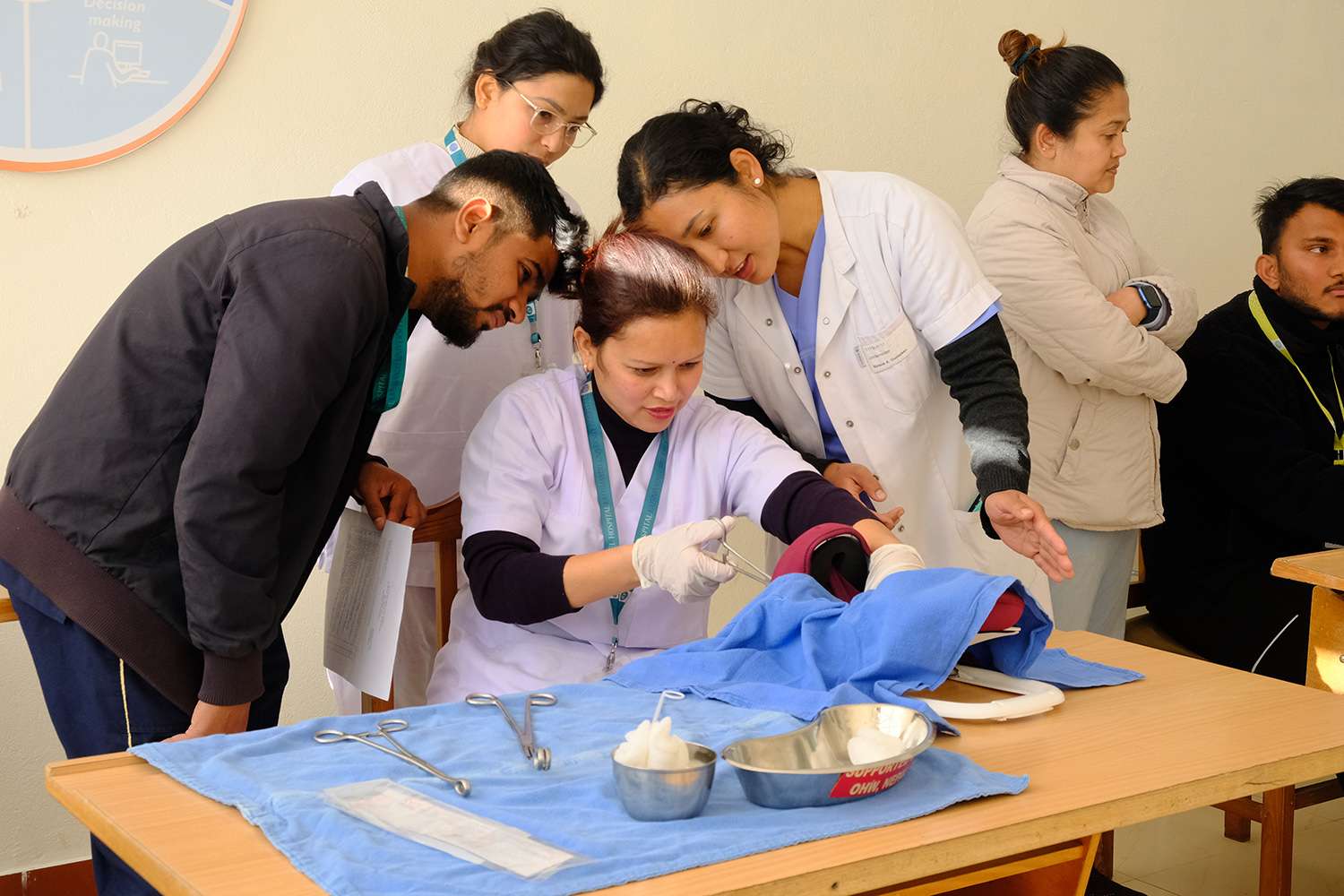Strengthening SRHR in pre-service medical, nursing and midwifery education in Nepal


Competent and confident healthcare workers are key to delivering quality health services. High-quality simulation-based education helps increase the confidence of students and providers offering these services.
In Nepal, a multi-sectoral partnership came together with a goal in mind – Using simulation to increase the pedagogy of medical, nursing, and midwifery education in Nepal. The project partners included the Family Welfare Division, Department of Health Services, the Ministry of Health and Population and Medical Education Commission, WHO Nepal, and Laerdal.

Closing photo with the Honorable Minister of Health, Bagmati Province, during the training on simulation at Kathmandu University School of Medical Sciences
The first phase of the project was implemented in eight educational institutions in Nepal: BP Koirala Institute of Health Sciences; Institute of Medicine, Tribhuwan University; Karnali Academy of Health Sciences, Kathmandu University School of Medical Sciences, National Academy of Medical Sciences, Patan Academy of Health Sciences, Pokhara University and Purbanchal University.
The project focused on addressing the gaps in the pre-service sexual and reproductive health (SRH) education in Nepal based on the findings of a comprehensive assessment. The project developed a health workforce to provide quality SRH services by:

Post-partum IUCD insertion practice between medical and midwifery interns
As of today, three institutions have implemented simulation in their curriculums, while the remaining have committed to implementing these changes soon. This program has trained 170 medical, nursing, and midwifery faculty on simulation-based education and skills. The trained faculty further supported cascading the training to other members and integrated the methodology into existing and new training courses. The mentoring sessions have trained 100 more medical, nursing, and midwifery faculty members. Ten simulation labs are being established in educational institutions.
To read more about this collaboration, read this news story by WHO: Improving delivery of quality sexual and reproductive health services by strengthening pedagogy in Nepal (who.int)